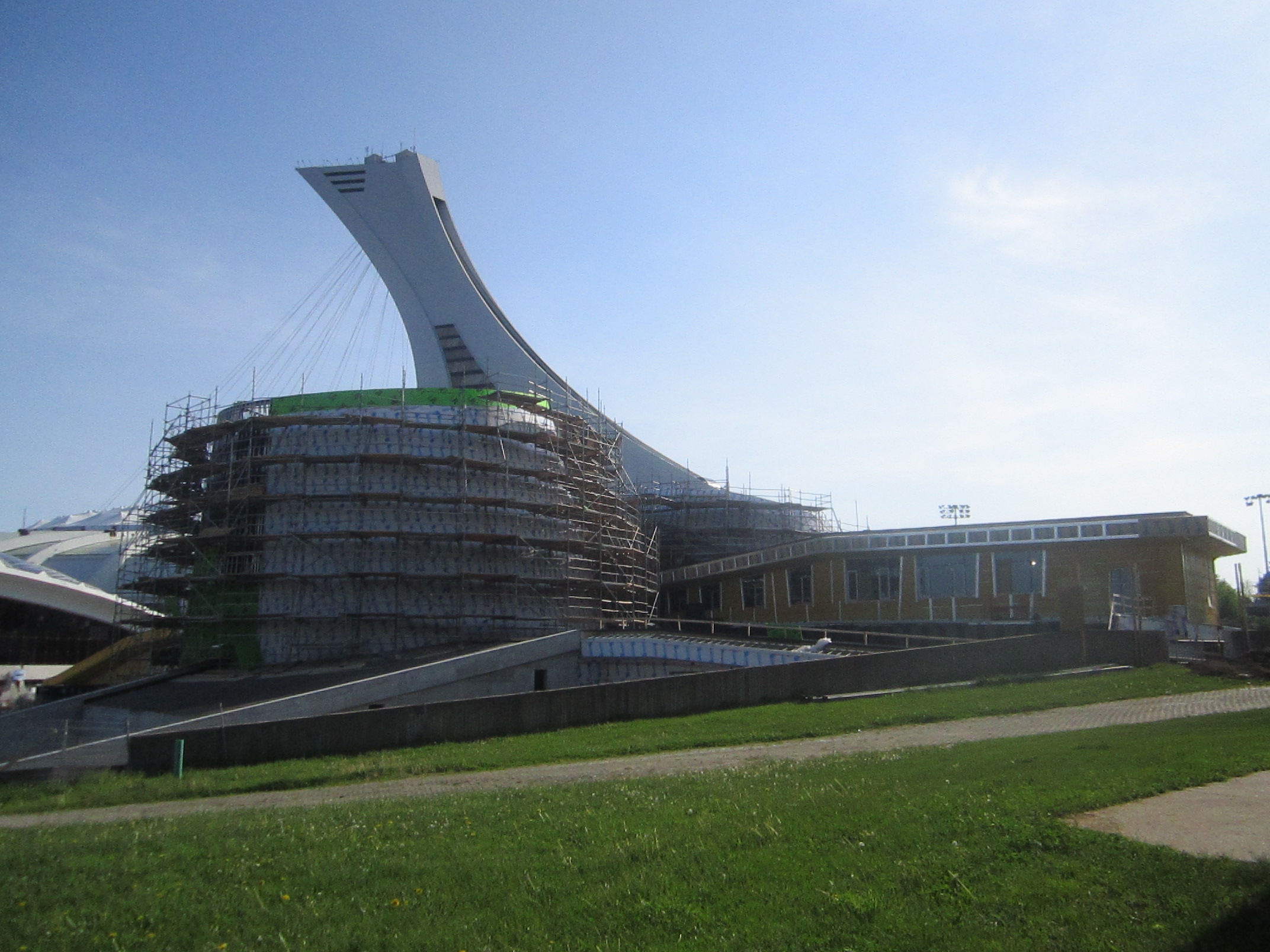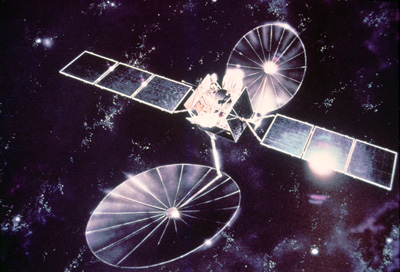The Canadarm was a remote-controlled mechanical arm, also known as the Shuttle Remote Manipulator System (SRMS). During its 30-year career with NASA’s Space Shuttle Program, the robotic arm deployed, captured and repaired satellites, positioned astronauts, maintained equipment, and moved cargo. While the Canadarm retired in July 2011 (following the Space Shuttle Program’s final mission), its legacy lives on: it established Canada’s reputation as a leader in technological innovation and inspired a series of other Canadian robotics used on the International Space Station, including Canadarm2.
The Canadarm was a remote-controlled mechanical arm, also known as the Shuttle Remote Manipulator System (SRMS). During its 30-year career with NASA’s Space Shuttle Program, the robotic arm deployed, captured and repaired satellites, positioned astronauts, maintained equipment, and moved cargo. While the Canadarm retired in July 2011 (following the Space Shuttle Program’s final mission), its legacy lives on: it established Canada’s reputation as a leader in technological innovation and inspired a series of other Canadian robotics used on the International Space Station, including Canadarm2.
Specifications
The Canadarm could be thought of as a 15-metre human arm with a wrist, elbow and shoulder. Each of these three joints included a “joint one-degree-of-freedom” (JOD). A JOD was a motor-driven gearbox that allowed the Canadarm to bend and turn with more flexibility than even a human arm.
A TV camera located on the robotic arm’s wrist, as well as an optional camera located at its elbow, acted as the Canadarm’s “eyes,” while one of the five on-board shuttle computers served as its “brain.” The TV cameras were part of the shuttle's closed-circuit television system and provided visual cues to an astronaut controlling the robotic arm from inside the shuttle. This control station included hand controllers, display panels, and a signal-processing interface box.
The Canadarm weighed 410 kilograms and could not support itself in Earth’s gravity. Because of this, engineers built a computer-based simulation facility—similar to a video game—to test the robotic arm and to train astronauts in its use. The facility, called SIMFAC, verified Canadarm’s operation before its first flight.
The Canadarm could lift over 30,000 kilograms on Earth—or up to 266,000 kilograms in the weightlessness of space—at speeds of up to 60 centimetres per second (depending on the payload mass). It could place such payloads in any position, within 5 centimetres of a desired target.
In order to meet strength requirements, engineers used the latest aerospace materials, including titanium, stainless steel, and ultra-high-modulus graphite-epoxy. The harsh environment necessitated special attention to thermal design and lubrication. The arm was entirely covered with a multi-layer insulation system consisting of alternate layers of goldized Kapton, Dacron scrim cloth, and a Beta cloth (fibre glass) outer covering. In extremely cold conditions, thermostatically controlled electric heaters protected critical electronics.
Development
The $110-million Canadarm development program was largely carried out by Canadian industry, under the direction of the National Research Council of Canada. The industrial team, led by Spar Aerospace Ltd., included CAE Electronics Ltd. and DSMA Atcon Ltd. (The Space Robotics Division of Spar Aerospace was acquired by MacDonald, Dettwiler and Associates Ltd. in 1999.) The Canadarm was signed over to NASA in February 1981, at Spar's Toronto plant, where it was built. After being carefully trucked to the Kennedy Space Center, it was integrated into the space shuttle Columbia in June.
Canadarm in Space
The Canadarm’s first flight was with the space shuttle Columbia on 13 November 1981. Columbia was the second of NASA’s shuttle missions (also known as STS-2).
It performed well and exceeded all design goals. Between 1981 and its final flight in 2011, the Canadarm flew 90 times. In addition to Columbia, its flight history included missions with all of NASA’s other shuttles: Challenger, Discovery, Atlantis and Endeavour.
The best-known tasks carried out with Canadarm were capturing, repairing and deploying several satellites, including missions to the Hubble Space Telescope; docking the space shuttle to the Russian Mir space station; knocking-off ice growths that were causing a blockage to a waste exit on the shuttle; and helping to construct the International Space Station.
Canadarm2
The next generation of the Canadarm is Canadarm2, the Space Station Remote Manipulator System (SSRMS)—a bigger, "smarter" version of the original. Canadarm2 was launched on STS-100 in April 2001. It is 17 metres long when extended fully and has seven joints. It played an important role in the construction of the International Space Station and remains on the station to conduct maintenance, move equipment and supplies, support astronauts working in space, and handle payloads. It has a Latching End Effector that allows it to be attached to complementary ports on the station's exterior.
The Mobile Base System (MBS) is a work platform that moves along rails running the length of the space station. It provides lateral mobility for the Canadarm2 and was added to the station during STS-111 in June 2002. When both Canadarms were in operation, they were sometimes used in tandem; a process nicknamed the "Canadian handshake" in the media.
Dextre
On 16 March 2008, the Special Purpose Dexterous Manipulator (Dextre) was added to the space station. Dextre was built using the same technology as Canadarm, and by the same company, MacDonald, Dettwiler and Associates. It is essentially a robot handyman used for a range of tasks outside the orbiting station, including many of the routine tasks done by astronauts during risky spacewalks. It can be moved around at the end of Canadarm2 or by the MBS. Dextre has two arms that are over three metres long, each with seven joints that allow movement in all directions. It has grippers, or “hands”, that work much like the components in a pocket knife. Each gripper has sensors that give it a human-like sense of touch, as well as retractable tools, a camera, lights, and a retractable umbilical connector to provide power and data connections when the robot manipulates electronic equipment or conducts experiments.
Canadarm3
A third generation of the Canadarm is the Canadarm3. The Canadarm3 is being designed and built by MDA SPACE (formerly MacDonald, Dettwiler and Associates) and is Canada’s contribution towards NASA’s Gateway, a space station in lunar orbit. The highly autonomous robotic system will be launched no earlier than 2029. (See also Artificial Intelligence.)
Legacy
The export-oriented, industrial returns achieved through the development of the Canadarm include the sale and maintenance of four Canadarm systems to NASA (one of the five built was donated); the sale of robotic components to Japan and Europe; the sale of simulators; and the development of robotic systems for the nuclear industry. The Canadarm established Canada as a key player in the high-technology fields of advanced manipulator systems and robotics.
In 2017, the Canada Post Corporation featured the Canadarm on a new postage stamp citing that “the stamp commemorates Canada’s achievements in space, science, technology and innovation.” The significance of the Canadarm was also recognized by the federal government in 2025. Under Parks Canada’s National Program for Historic Commemoration, the Canadarm’s deployment in space was designated a national historic event.

 Share on Facebook
Share on Facebook Share on X
Share on X Share by Email
Share by Email Share on Google Classroom
Share on Google Classroom

















